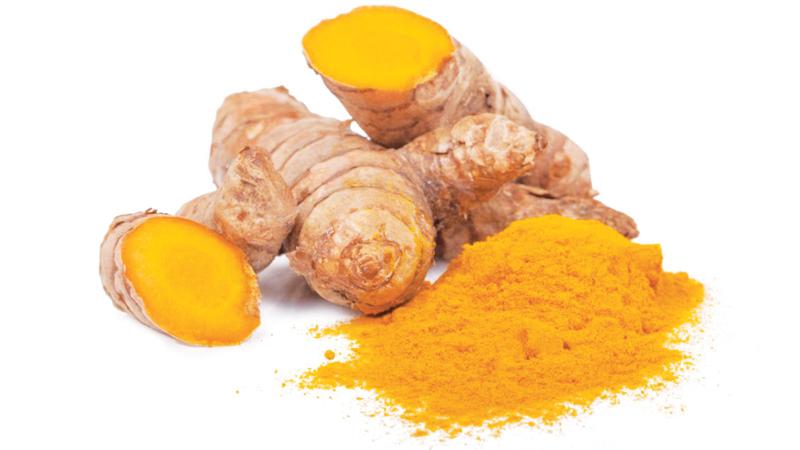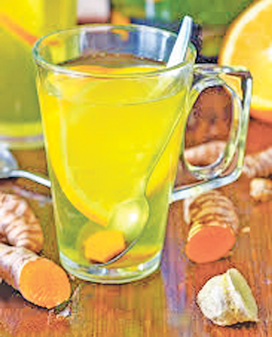
Turmeric also known as the golden spice is a tall, flowering plant belonging to the ginger family Zingiberaceae and is a perennial plant. It is found in Southeast Asia and Central America. Its Latin names are Curcuma aromatic, Curcuma domestica and Curcuma longa.
Turmeric has been used through millennia in Ayurveda, Siddha, Chinese and Unani medicine. In Ayurveda turmeric is known as Haridra. It has bioactive compounds with medicinal value known as Curcuminoids, the most important of which is Curcumin.
Curcumin has strong anti – inflammatory properties and is a very strong antioxidant. Tumeric has a warm, bitter taste similar to black pepper and has a mustard like, earthy aroma.
It has been used in India for millenia for its medicinal and other properties. Today, Science has realised what the Indians have known for centuries - that turmeric indeed has compounds beneficial to man - and is researching the spice. Already, there are turmeric based medicinal and beauty products on the market.
Tumeric is used in the treatment of a wide range of diseases including arthritis, heartburn (dyspepsia) joint and stomach pains, diarrhoea, loss of appetite, irritable bowel syndrome, fatigue, depression , Alzheimer’s disease and kidney problems.
 This spice is used in cooking to add flavour and colour to food.
This spice is used in cooking to add flavour and colour to food.
Studies on Satay, a grilled meat dish have revealed an important property of tumeric. When any kind of meat is grilled it produces much heterocyclicamines (HCA’s) from protein substances in the meats which are potential health risks. Researchers have discovered that turmeric helps to prevent the formation of HCA’s in grilled meat.
Turmeric is an important ingredient in beauty treatment and has been used by ancient queens and princesses as well as ordinary girls and women from time immemorial.
Research has revealed that curcumin is able to decrease UV damage as it is a natural antioxidant. It also has anti bacterial properties and is known to clear acne.
Kavita Mariwalla, a dermatologist in West Islip, New Yorks says of curcumin, “It can prevent conditions, including skin redness, hair loss and cardio vascular disease which are caused by inflammation.”
Turmeric is also used in the treatment of Psoriasis. It is also a skin lightening agent and is helpful in improving circulation . Improved circulation will help reduce puffiness and under-eye darkness. Antioxidants in tumeric also help control signs of aging such as wrinkles and ‘crows feet.’ Dark spots can be effectively treated with tumeric and honey. They have anti bacterial and anti inflammatory properties.
Can you believe that a bright yellow spice can whiten your teeth? Well, tumeric can. It also can help cure gingitis and releive toothaches.
Tumeric can be used to get rid of dandruff and stimulate hair growth.
Saffron, said to be one of the most expensive spices in the world, is at times confused with tumeric. Saffron is totally different from tumeric and is produced by picking the vibrant, crimson and gold stigma and styles of the purple coloured flower, crocus sativus or saffron crocus. It is also known as the Autumn crocus. A bulbuos perennial of the Iris family (Iridaceae) saffron has an aroma which is strong and exotic and a bitter taste. Saffron is believed to have originated in the Mediterranean, Asia minor and Iran. In ancient times a water soluble cloth dye was created by using saffron. This exotic spice was introduced to China during the Mongolian invasion of that country. The Greeks and Romans used it as a perfume and it was much favoured by Greek courtesans. It is also said that when Nero entered Rome the streets had been sprinkled with saffron. The original cultivation site of saffron has been Cilicia.
Today saffron is mainly grown in Spain, France, Italy, Sicily, Iran and Kashmir. As the cultivation and production of saffron is chiefly by hand it is a very labour intensive process. This is why saffron is so costly.
It is said that 75,000 saffron crocus flowers are needed to produce a pound (0.45kilogram ) of saffron – another reason for its high cost.
The stigmas and styles are hand picked, spread on trays and dried over charcoal fires.
Saffron is used as a spice, colouring and flavouring in food and especially in Mediterranean and Oriental food. It is also important in the making of bouillabaisse. It is used as a dye for cloth and other materials.
Saffron has medicinal properties and is used in the treatment of asthma, coughs, pertussis or whooping cough, insomnia and heart burn. It is also used in the treatment of baldness.
Saffron is rich in vitamins and antioxidants and helps to enhance the skin and make it glow. It is also anti fungal and anti inflammatory and can be used to treat acne.
